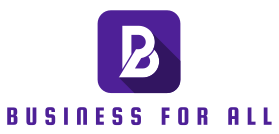The way we work is changing. With the rise of digital technology, the traditional 9-to-5 job is no longer the only route to career success. Increasingly, professionals around the world are embracing freelancing—not just as a side hustle, but as a full-fledged career path. This shift is so significant that it’s often referred to as the Freelance Revolution.

Whether you’re a writer, designer, marketer, developer, consultant, or any kind of service provider, the opportunities to build a thriving business online have never been greater. However, thriving in the freelance economy requires more than just talent. You need business acumen, strategy, and persistence.
In this article, we’ll take a deep dive into the key steps, challenges, and best practices to successfully build and scale your own online freelance service business.
1. Understanding the Freelance Revolution
What Is Freelancing?
Freelancing is the practice of offering services to clients or companies on a project-by-project basis, typically without long-term commitment. Unlike full-time employees, freelancers are self-employed, manage their own schedules, and often work remotely.
Why Is It a Revolution?
The term “Freelance Revolution” reflects the widespread and growing shift toward independent work. According to a 2023 report by Upwork, over 60 million Americans performed freelance work—roughly 39% of the workforce. Globally, the freelance economy is projected to surpass $455 billion by 2025.
What’s Driving It?
-
Digital platforms like Upwork, Fiverr, and Freelancer make it easy to find clients.
-
Remote work culture normalized by the COVID-19 pandemic.
-
Desire for flexibility and better work-life balance.
-
Global connectivity enabling cross-border collaboration.
2. Choosing the Right Freelance Niche
One of the most crucial decisions in your freelance journey is choosing your niche—your specific area of expertise or the problem you solve for clients.
Why a Niche Matters:
-
Makes you stand out in a crowded market.
-
Helps you build targeted marketing strategies.
-
Enables you to charge higher rates as a specialist.
How to Choose a Niche:
-
Assess your skills: What do you do well?
-
Find demand: What services are businesses actively looking for?
-
Analyze competition: Where can you offer something unique?
-
Follow your interests: Passion fuels persistence.
Examples of high-demand niches:
-
Content writing & copywriting
-
Graphic design & branding
-
Website & app development
-
SEO & digital marketing
-
Virtual assistance
-
E-commerce support
-
Online coaching & consulting
3. Setting Up Your Freelance Business
Freelancing may offer freedom, but it’s still a business. Here’s how to set up your foundation professionally:
Legal and Administrative Setup
-
Register your business (optional but recommended for tax purposes).
-
Choose a business name and secure a matching domain.
-
Set up a business bank account.
-
Understand your tax obligations as a self-employed individual.
Build Your Online Presence
-
Website/Portfolio: Showcasing your work and services.
-
LinkedIn: Networking with professionals and sharing expertise.
-
Freelance platforms: Upwork, Fiverr, Toptal, PeoplePerHour.
-
Social media: Instagram, Twitter, YouTube—depending on your niche.
Create a Pricing Strategy
-
Hourly vs. fixed rates.
-
Package deals for commonly requested services.
-
Consider your skill level, market rates, and income goals.
Tools to Invest In
-
Project management (Trello, Asana)
-
Time tracking (Toggl, Clockify)
-
Contracts & proposals (HelloSign, Bonsai)
-
Invoicing (Wave, FreshBooks)
4. Attracting and Retaining Clients
Finding Clients:
-
Freelance platforms: Great for beginners, though competitive.
-
Job boards: FlexJobs, SolidGigs, ProBlogger Jobs.
-
Cold outreach: Email or message businesses directly.
-
Referrals: Ask existing clients to refer others.
-
Networking: Join industry forums, webinars, and local events.
Building a Strong Portfolio:
-
Include case studies, testimonials, and samples.
-
Offer discounted or pro bono work to build early samples, if needed.
-
Tailor your portfolio for each niche or service offering.
Crafting Winning Proposals:
-
Personalize each proposal.
-
Focus on the client’s problem, not just your skills.
-
Offer clear deliverables and timelines.
-
Keep it concise and professional.
Client Retention Tips:
-
Communicate regularly and clearly.
-
Deliver work on time and exceed expectations.
-
Offer additional services or packages.
-
Ask for feedback and act on it.
5. Managing Your Workload and Time
Being your own boss sounds amazing—until you’re juggling five projects, three client calls, and a missed deadline.
Tips for Freelance Time Management:
-
Plan weekly and daily tasks in advance.
-
Use tools like Google Calendar, Notion, or ClickUp.
-
Prioritize high-paying and repeat clients.
-
Set boundaries with clients on work hours and availability.
Avoiding Burnout:
-
Schedule regular breaks.
-
Say “no” to bad-fit clients.
-
Delegate or subcontract if you’re overwhelmed.
-
Focus on quality over quantity in client relationships.
6. Scaling Your Freelance Business
Once you have steady income and a strong client base, it’s time to think about scaling.
Ways to Scale:
-
Increase your rates: As you build expertise, charge more.
-
Productize your services: Offer packages or retainer models.
-
Outsource: Hire junior freelancers or assistants.
-
Launch digital products: Sell e-books, templates, or online courses.
-
Niche down further: Become the go-to expert in a micro-niche.
Build a Personal Brand:
-
Blog or post regularly on LinkedIn or Medium.
-
Speak at virtual events or on podcasts.
-
Start a YouTube channel or newsletter.
The goal is to move from a freelancer mindset to an entrepreneurial one.
7. Financial Management and Planning
Freelancers face income fluctuations and lack employer benefits, so smart money management is essential.
Budgeting and Saving:
-
Save 25–30% of your income for taxes.
-
Build a 3–6 month emergency fund.
-
Create a business budget for tools, software, and marketing.
Tax Considerations:
-
Track income and expenses with tools like QuickBooks or Wave.
-
Set quarterly estimated tax payments.
-
Consult a tax professional for deductions and compliance.
Health and Retirement:
-
Research self-employed health insurance options.
-
Set up a retirement account like a Solo 401(k) or SEP IRA.
8. Common Mistakes and How to Avoid Them
-
Underpricing: Charge based on value, not desperation.
-
Lack of contracts: Always use clear agreements to avoid disputes.
-
Scope creep: Define project limits and charge for extras.
-
Inconsistent marketing: Promote your services regularly—even when busy.
-
Ignoring self-care: Your health and motivation fuel your business.
9. The Future of Freelancing
The freelance economy is only expected to grow. Emerging trends include:
-
AI integration: Freelancers using tools like ChatGPT for efficiency.
-
Remote collaboration: Cross-border teams on the rise.
-
Microservices: Niche gigs like “1-hour website audits” gaining popularity.
-
Freelancer unions and co-ops: Group benefits and collective bargaining.
Freelancers who adapt, automate, and upskill will thrive in this evolving landscape.
Conclusion: Freelancing as a Long-Term Career Path
The freelance revolution is not a fad—it’s a fundamental transformation in how we work. While it demands initiative and self-discipline, it also offers freedom, growth, and unlimited income potential. With the right mindset, systems, and commitment to excellence, you can build a sustainable, fulfilling online service business that gives you control over your time, work, and life.
Remember: Freelancing isn’t just about working from home—it’s about working on your terms.
